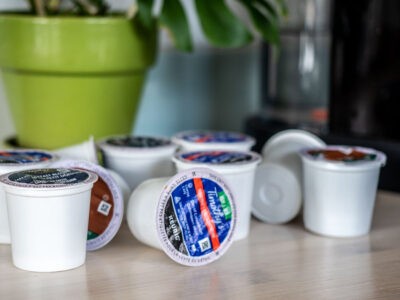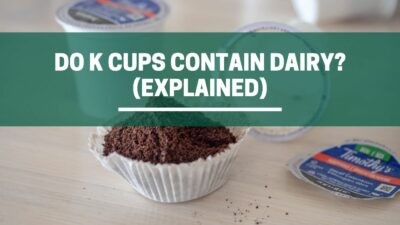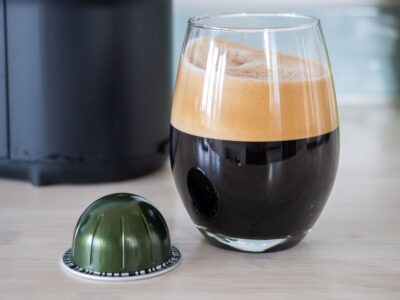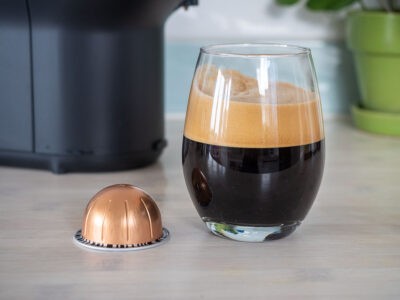Keurig Guides
Why is My Keurig Machine Not Piercing the Pods? (And How To Fix It)
Keurig machines are not known for penetrating K-cups in general, let alone if they have been reused a few times already. I’ve used them for years and love the convenience of them, but it would always irk me when the second or third cup from the same K-cup would taste significantly worse than cups 2 and 3 before it.
Something was off about this whole process, and I couldn’t figure out what that was until I did some research and found my answer: the Vue pack vs. K-Cup issue wasn’t just about how well each machine brewed its specific brand of pods; there were other factors at play here too, like the piercing of the pod.
Why Listen To Us? Well, because we KNOW coffee! In fact, we make our own coffee, coffee machine cleaners, and reusable capsules which we've sold to over 41 countries. Our team ouf experts include Tristan (an engineer), Claire (a food writer) and Richy (a barista). So, whether you're looking for a recipe or repair guide, we've got you covered 💚
Table of Contents
Eight Reasons Why is My Keurig Machine Not Piercing the Pods
There are a few key things you can do to help increase your Keurig’s ability to properly pierce a pod and make a great cup of coffee.
1. The needle on the Keurig machine may be dirty or clogged.
If the needle is dirty or clogged, it will not pierce the pod correctly. To clean the needle, you can use a cotton swab and rubbing alcohol. Be sure to allow the machine to dry completely before using it again.
2. The water reservoir may not be full enough.
If the water reservoir is not full enough, it will not create enough pressure to pierce the pod correctly. Be sure to allow the machine to heat the water before using it again. If you notice this happening and know your reservoir is not empty and full of water, there could be a problem with the pump.
3. There may be a pressure buildup in the pod holder.
There can be pressure built up inside of the pod holder if too many pods are placed into it. This will cause an extra amount of pressure as you try to brew coffee from your machine because there is more than one pod present in the machine.
To resolve this issue, remove all but one pod from the maker and place them back into it. If this does not fix your problem, make sure that only one or two K-cups are present in the pod holder from now on.
4. There may be a problem with your Keurig’s pump.
If you notice that this is happening and there are no pods in the machine, then there could be a problem with the pump. If this sounds like your issue, do not use your machine until a professional has fixed it.
5. Grounds from a previous brew stuck to the needle or inside the pod holder may cause blockage(s).
These grounds can cause blockages in both places because they are large enough to obstruct the way for water to flow out of them correctly. To prevent issues from ground buildup, wipe off any existing grounds from the needle before using it again. To remove any grounds stuck inside the pod holder, carefully open it up and wipe them off.
6. The pod itself may have some visible holes or tears in it, which can cause an overflow of coffee to come out while brewing.
To solve this issue, you will need to purchase a new set of pods for your machine so they can continue working correctly. If you do not want to go through the trouble, do not use that brand anymore until you get a replacement which the manufacturer guarantees not to have these types of issues again.
7. The K-cup may have had something sharp pierce into it during the production process rendering it useless for normal Keurig machines after all.
These types of issues are not very common, but they do happen. If this is your issue, you should contact customer service to get a replacement that will work with any normal Keurig machine.
8. The pod may have been filled incorrectly by the manufacturer.
This can be an even more serious problem than number six above because the wrong coffee grinds could have been put inside of it for use in your particular Keurig machine. This would cause it to either brew the wrong type of drink or malfunction entirely, which could cause injury if hot liquids were being released from the maker at that time.
If this is your issue, be sure to contact customer service immediately about getting a replacement pod that has been filled correctly for your model maker.
How to Take Care of Your Keurig Machine
First, make sure that you have descaled your machine regularly. Keurig recommends every three months or so. Descaling your machine helps remove any calcium buildup that may have accumulated and could be causing blockages in the needle. Second, use fresh water whenever possible. If you live in an area with hard water, using distilled or filtered water can help reduce mineral buildup on the needle and improve performance.
Third, always use the K-Cup pod designed for your specific Keurig model. Using an incorrect pod can impact how well the needle pierces the pod and cause blockages.
Fourth, do not overfill your water reservoir. Filling it too full can cause the water pressure to be too high when brewing, and again, this can lead to blocked needles.
Fifth, make sure that the lid of the K-Cup is properly in place before brewing and that there are no cracks or damage to it. A damaged lid could also interfere with proper piercing.
Sixth, use a mug that is at least 10 ounces in size. If you use a smaller mug, the Keurig will try to brew more than one cup at a time, and this could cause overflowing and put extra pressure on the needle, which can interfere with proper piercing.
Seventh, only store your K-Cups in a cool, dry place. If you leave them out at room temperature for too long or keep them in a damp environment, they may need to be replaced even if they appear to look okay
Finally, clean your Keurig regularly and thoroughly! Over time, coffee oils can build up inside it, reduce performance, and make it harder to clean properly. Using vinegar is an easy way to do this quickly without taking anything apart.
Conclusion
Following these simple tips should help increase your Keurig’s ability to pierce a K-Cup pod correctly and brew a great cup of coffee each time. If you are still having trouble after trying all of these, don’t hesitate to reach out to Keurig’s customer service for more assistance.







